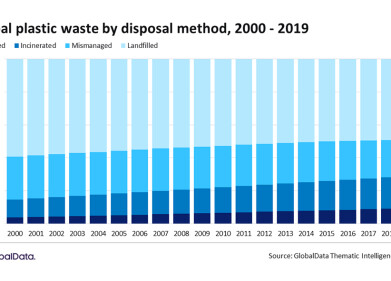Fuel for Thought
Flying Green
Jun 17 2021
Another important standards development effort that will improve the sustainability of transportation infrastructure relates to work being done on jet fuel standards by the subcommittee on emerging turbine fuels (D02.JO.06).
In an October 2019 report, the Environmental and Energy Study Institute estimated that aviation produced 2.2% of global carbon dioxide (CO2) emissions in 2018. Though this number seems small, if aviation were a country, it would have ranked sixth that year among the nations of the world — between Japan and Germany — in emissions.
Looked at another way, the Boeing 737 family — one of the best-selling airliners in the world —uses 750 gallons (630 L) of fuel in an hour. That translates to about 12.5 gallons (47 L) per minute. This makes improving the efficiency of commercial aircraft an ongoing priority for the industry.
A watershed moment in addressing this issue occurred in 2006, when the European Union (EU) imposed carbon-emission requirements on all airlines flying into Europe. Since then, the EU Emissions Trading Scheme (ETS) has spawned various international standards designed to limit aircraft emissions worldwide. A recent example is the rules regarding greenhouse gas emissions recently released by the International Civil Aviation Organization and EPA. The rules apply to certain new commercial jets, including all large passenger aircraft.
Filling up with renewable jet fuels is one way airlines can meet these global standards (buying offsets is the other). Low-emission aviation fuels can be made with a number of different conventional and synthetic blending components, including algae and plant material. But what are the criteria for these renewable options?
“From an ASTM perspective, safety is critical,” says Mark Rumizen, senior technical specialist, aviation fuels, with the U.S. Federal Aviation Administration, and chair of D02.J0.06. “Safety must take precedence over other considerations such as emissions and economics. ASTM’s role is to evaluate all new candidate alternative jet fuels and write specifications to make sure they’re as safe as possible and perform properly.”
The specification for aviation turbine fuel containing synthesized hydrocarbons (D7566) is one such reference. Updated in January, this specification defines minimum property requirements for fuel that contains synthesized hydrocarbons or is derived from renewable sources. The standard also lists acceptable additives for use in civil-operated engines and aircraft. Developed for civil-aviation scenarios, the specification may also be adopted for government, military, and other specialized uses.
Fuels based on this standard that are made from synthetic or renewable sources will significantly reduce net greenhouse gas emissions. In a powerful example of circularity, CO2 emitted from jet engines will be offset by the CO2 consumed by the renewable feedstock used to make the fuel.
Rumizen also notes that several major aviation companies recently announced their intention to operate with unblended, or 100%, sustainable aviation fuel (SAF). “ASTM Subcommittee D02.J0 has been called into action and has formed a task group to develop specification updates that accommodate the use of these unblended SAFs. While just getting started, task group members are already busy developing concepts for discussion,” he says.
Digital Edition
PIN 25.2 Apr/May
May 2024
Safety - Carbon monoxide toxic and flammable gas detection Analytical Instrumentation - Density: A fundamental parameter at critical stages within the petroleum sector - Advancements and...
View all digital editions
Events
Jul 10 2024 Birmingham, UK
Thailand Oil & Gas Roadshow 2024
Jul 11 2024 Rayong, Thailand
Jul 20 2024 Denver, CO, USA
Jul 21 2024 Cape Town, South Africa
Jul 24 2024 Bogata, Colombia


















